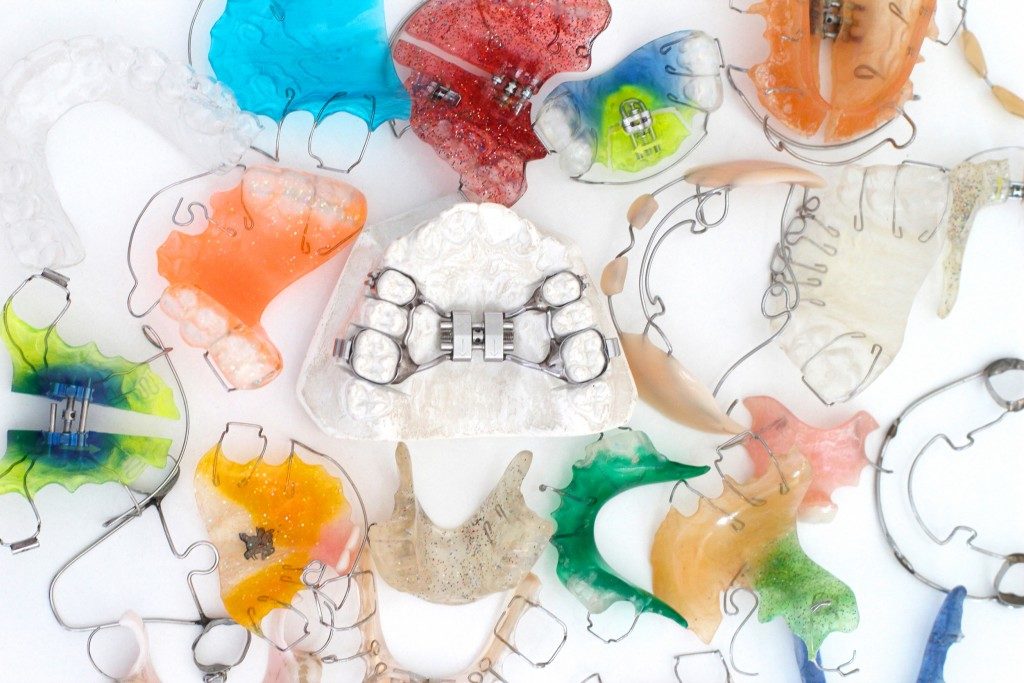As opposed to Hawley or transparent retainers, permanent retainers are fixed to the back of the teeth and are durable enough for a lifetime. They offer several advantages to their removable counterparts, though they are also challenging to clean.
Retainers ensure the controlled movement of teeth toward the correct positions as the patient ages. Because the position of teeth gradually shifts across a person’s lifetime, retainers are a fact of life for many dental patients long after the significant orthodontic correction has been achieved. Dentists recommend wearing retainers throughout the patient’s lifetime to ensure that the teeth retain their proper place.
Frequently, children, teens, and adults receive removable retainers, oral appliances worn at certain times of the day. The more common Hawley retainers tend to last longer than their clear counterparts, but appear more unwieldy. Both would eventually need to be replaced periodically.
For some people, permanent retainers—held together by gold retainer wires—are an excellent alternative for removable retainers. Although not without its challenges, permanent retainers provide much of the benefits of removable retainers without the hassle of having it inserted every day. As their name suggests, permanent retainers are bonded to the patient’s teeth for a lifetime.
Permanent advantages
To be effective, removable retainers need to be habitually worn. Patients new to retainers may find this task especially difficult, and some never develop the habit, exposing them to the potential of dental relapse. Permanent retainers solve this issue by being anchored behind the teeth; they cannot be removed, and thus, there is no danger of them being forgotten or lost.
Permanent retainers look significantly better compared with Hawley retainers. As they are situated behind teeth, they are not as perceptively unsightly. They also allow the teeth to touch one another. As opposed to either type of removable retainer, permanent retainers are immensely durable and can withstand daily wear and tear.
Unlike removable retainers, permanent retainers do not impede the user’s ability to speak and do not need to be removed when eating and drinking. These retainers are fitted snug to the teeth and are not readily visible during speech. Because they are not removable, they are also not likely to get lost.
Cleaning conundrums
 One major disadvantage of permanent retainers is that they are challenging to clean. Overcoming the main disadvantage of permanent retainers requires careful attention to oral hygiene due to the special needs of the retaining wire. When poorly cleaned, tartar and plaque can build up in the spaces between the teeth and the retainer, which can lead to tooth decay and gum diseases.
One major disadvantage of permanent retainers is that they are challenging to clean. Overcoming the main disadvantage of permanent retainers requires careful attention to oral hygiene due to the special needs of the retaining wire. When poorly cleaned, tartar and plaque can build up in the spaces between the teeth and the retainer, which can lead to tooth decay and gum diseases.
To prevent this, patients can use a specialized threader to gently remove food particles and tartar in between the teeth and the retainer. Thus, orthodontists usually only recommend permanent retainers to patients capable of thorough and habitual oral hygiene.
Durability
Gold retainer wires may seem ostentatious, but it is not without its purpose. Gold is chemically inert and will not cause any reaction to the body, adverse or otherwise. Gold is a safe material to use in oral health applications. In addition, gold is also resistant to corrosion. Thus, permanent retainers are resilient and are not easily damaged.
Utility
With the clearance of their orthodontists, patients can reap the benefits of preventing oral relapse without worrying about appearances or habitually wearing seemingly unwieldy appliances. Because permanent retainers are a solution for a lifetime, however, they are not usually recommended by orthodontists to patients for minor malocclusions; these can be corrected as needed through removable retainers.
Permanent retainers, meanwhile, are an effective option for individuals who have had extensive orthodontic corrections done. Orthodontists also recommend them as a precautionary measure to prevent the recurrence of obvious misalignments, such as gaps between front teeth.


